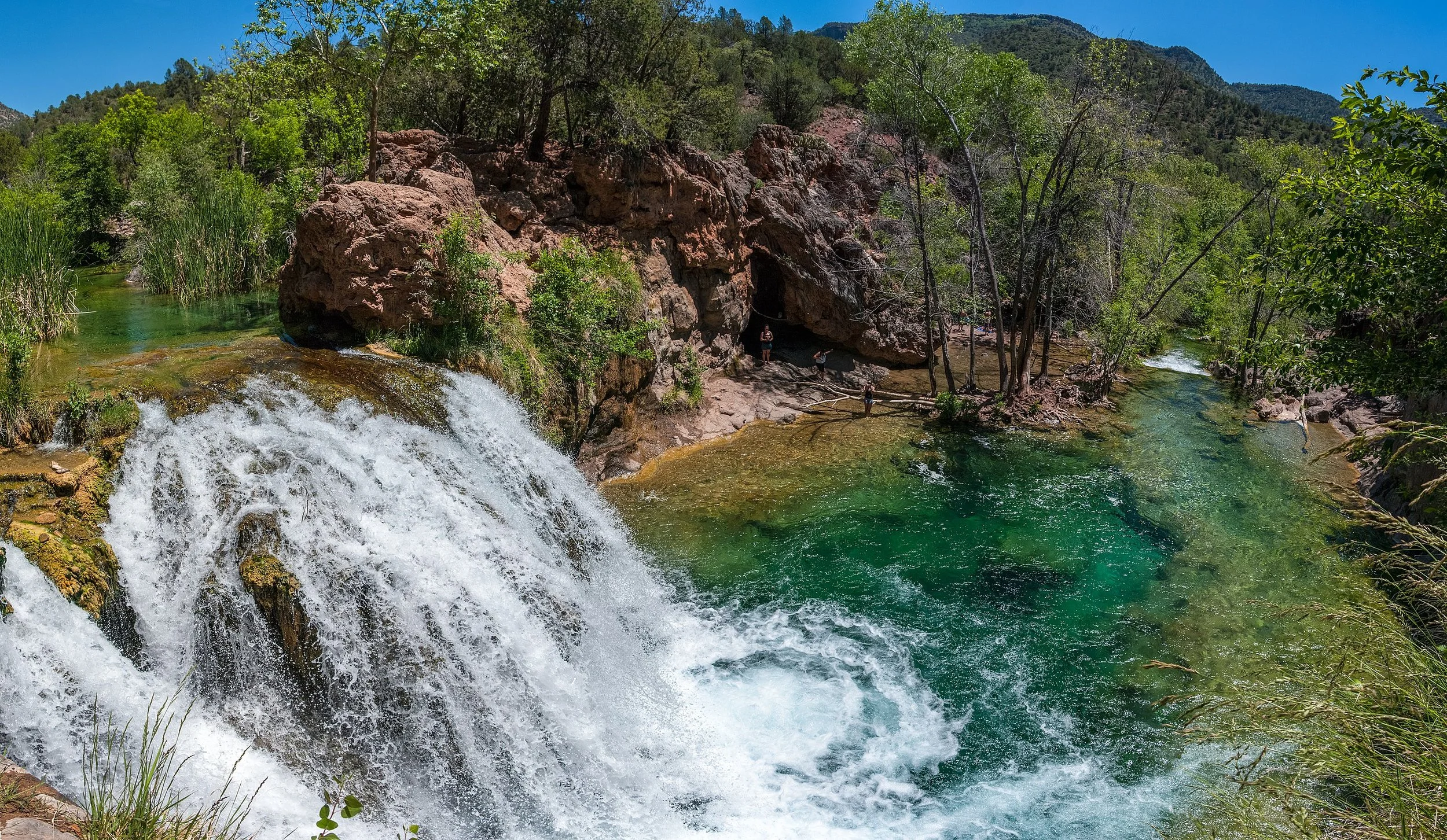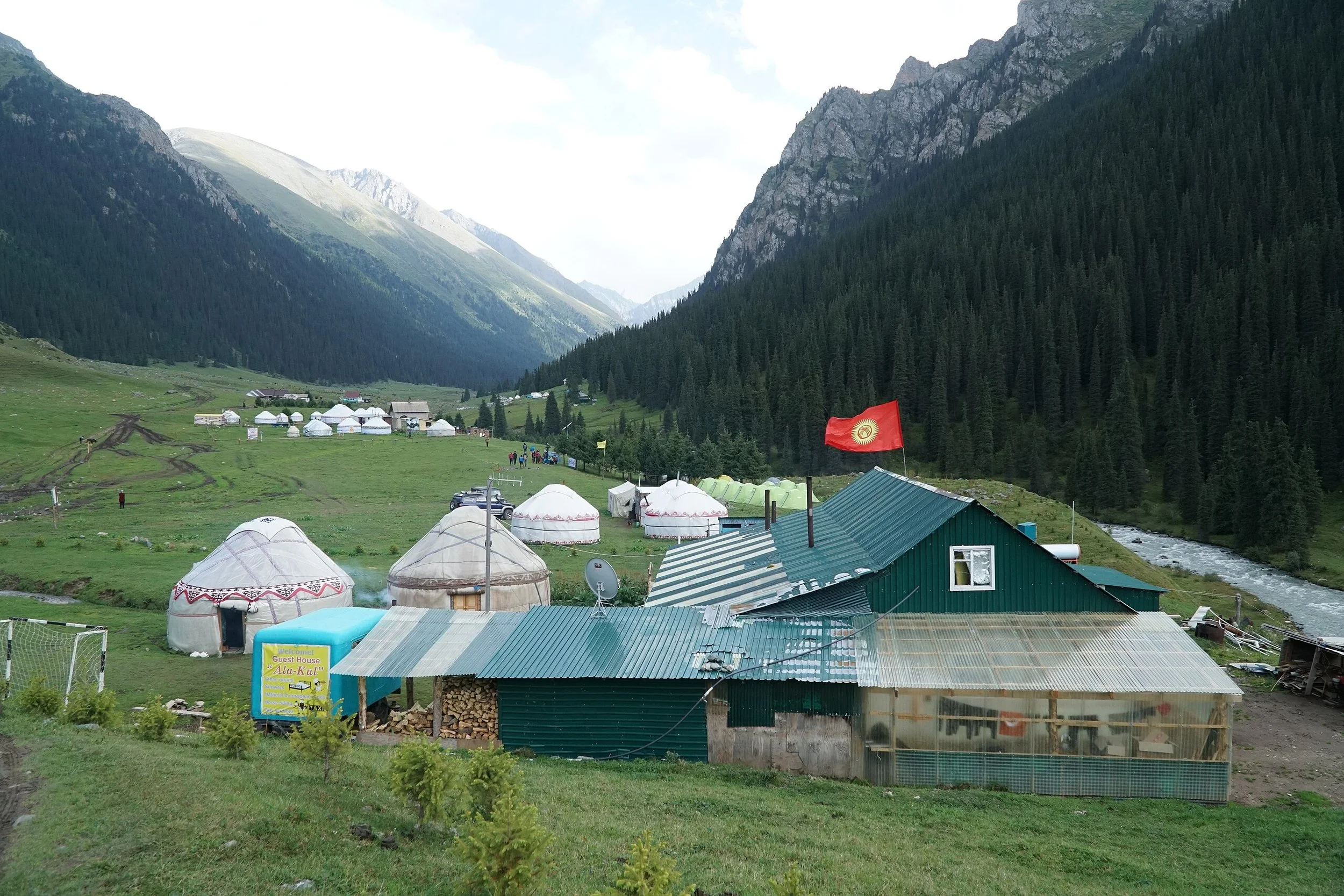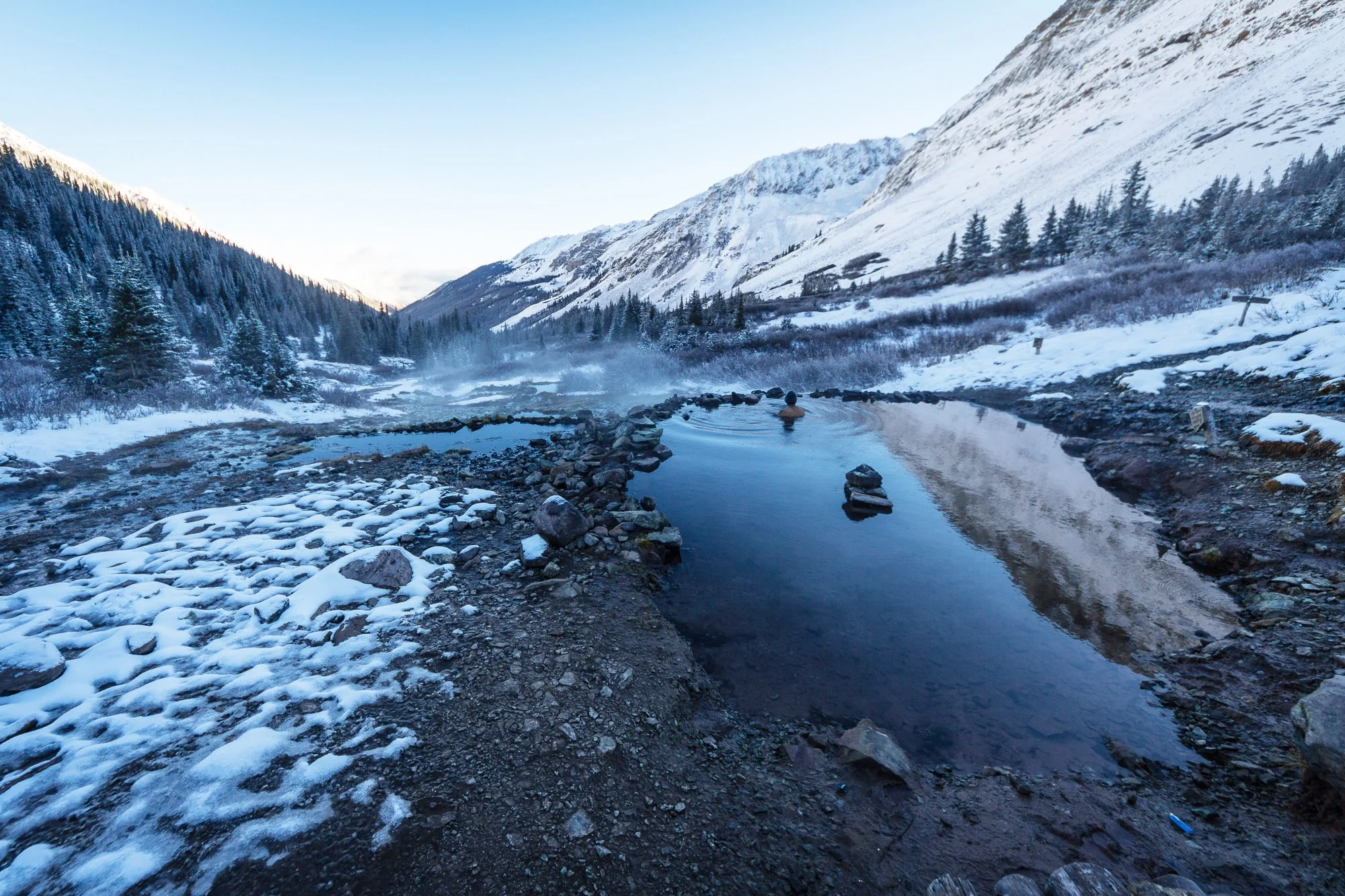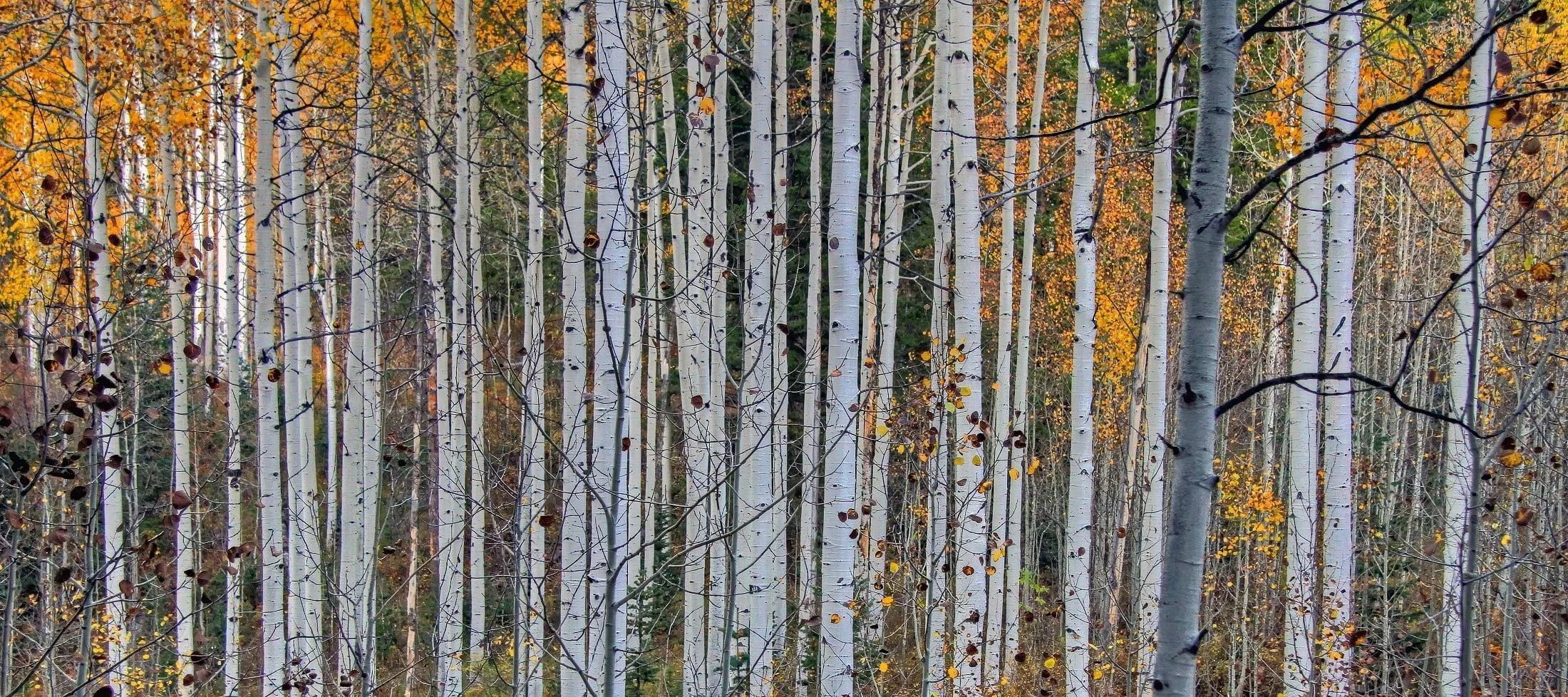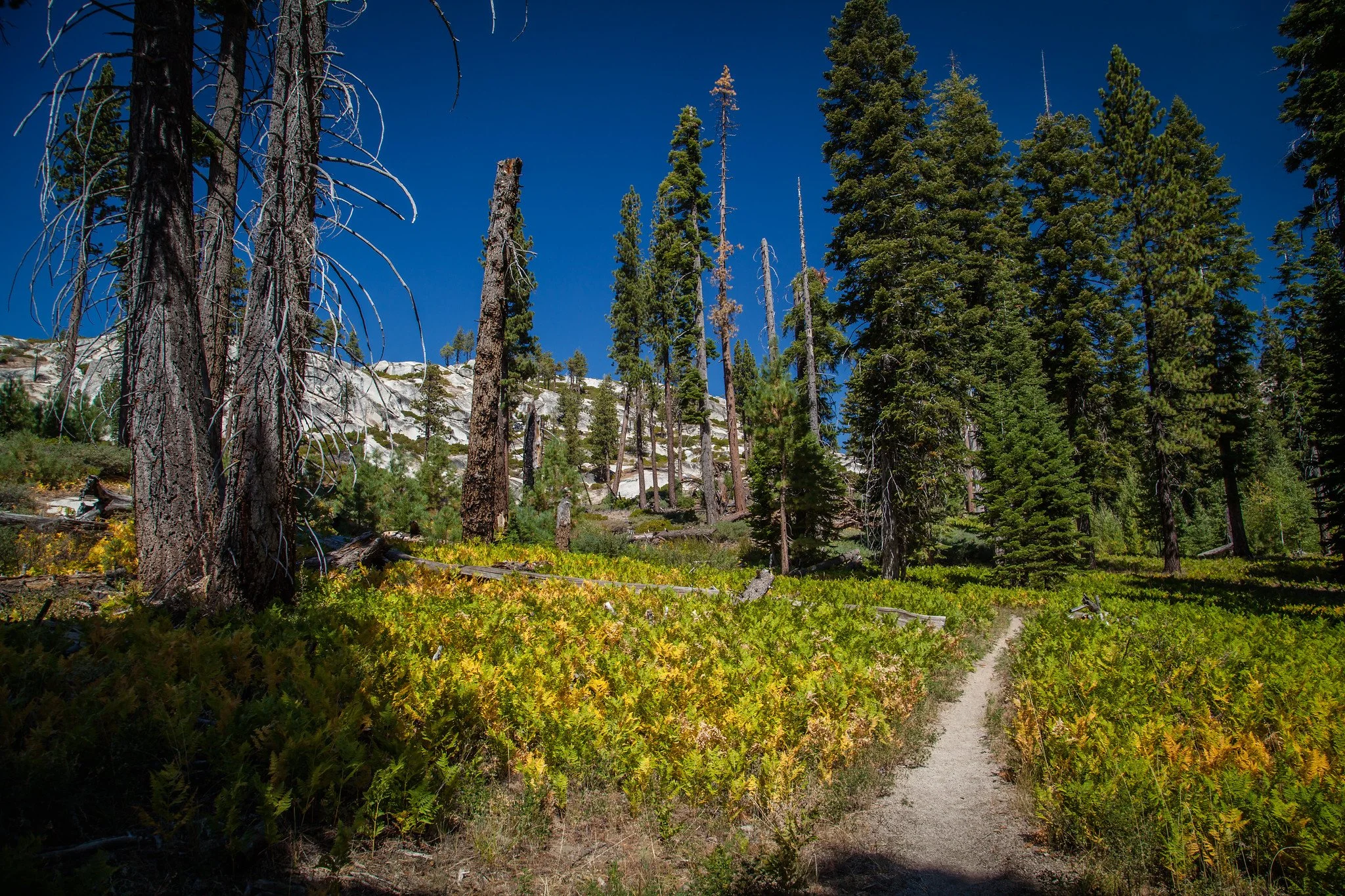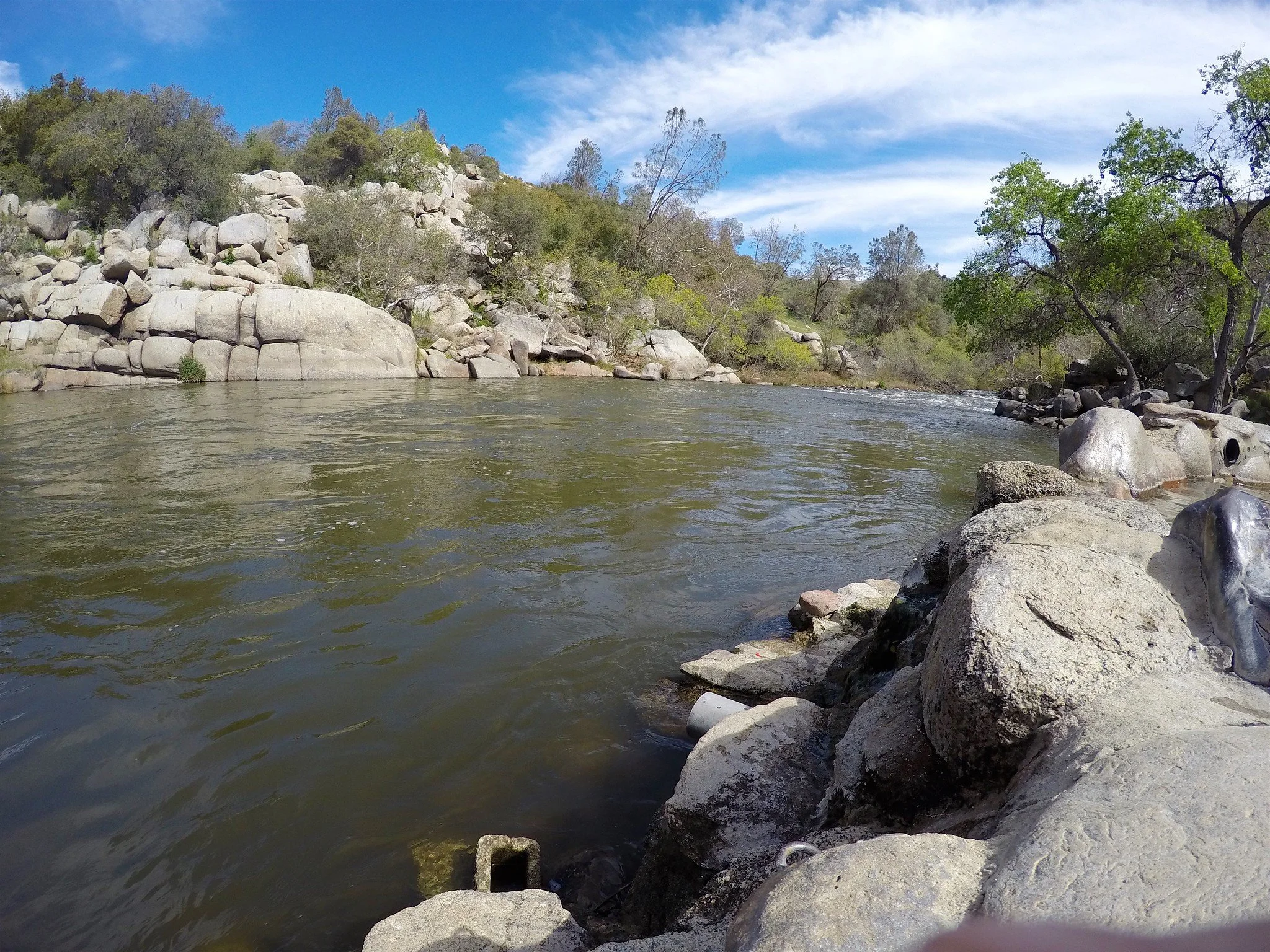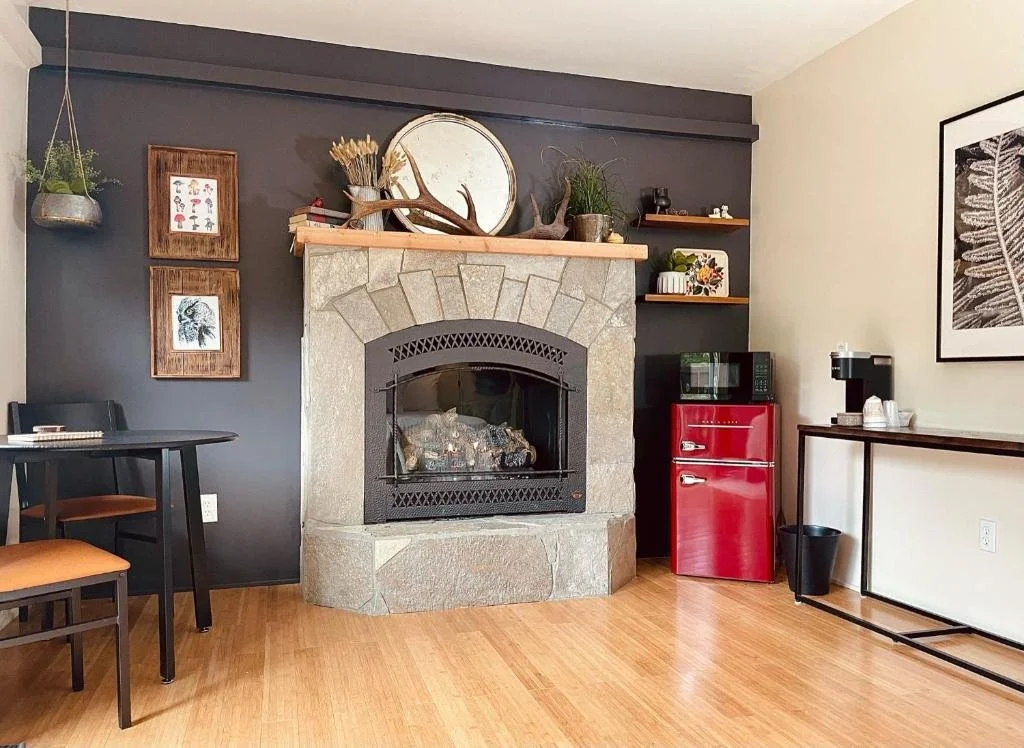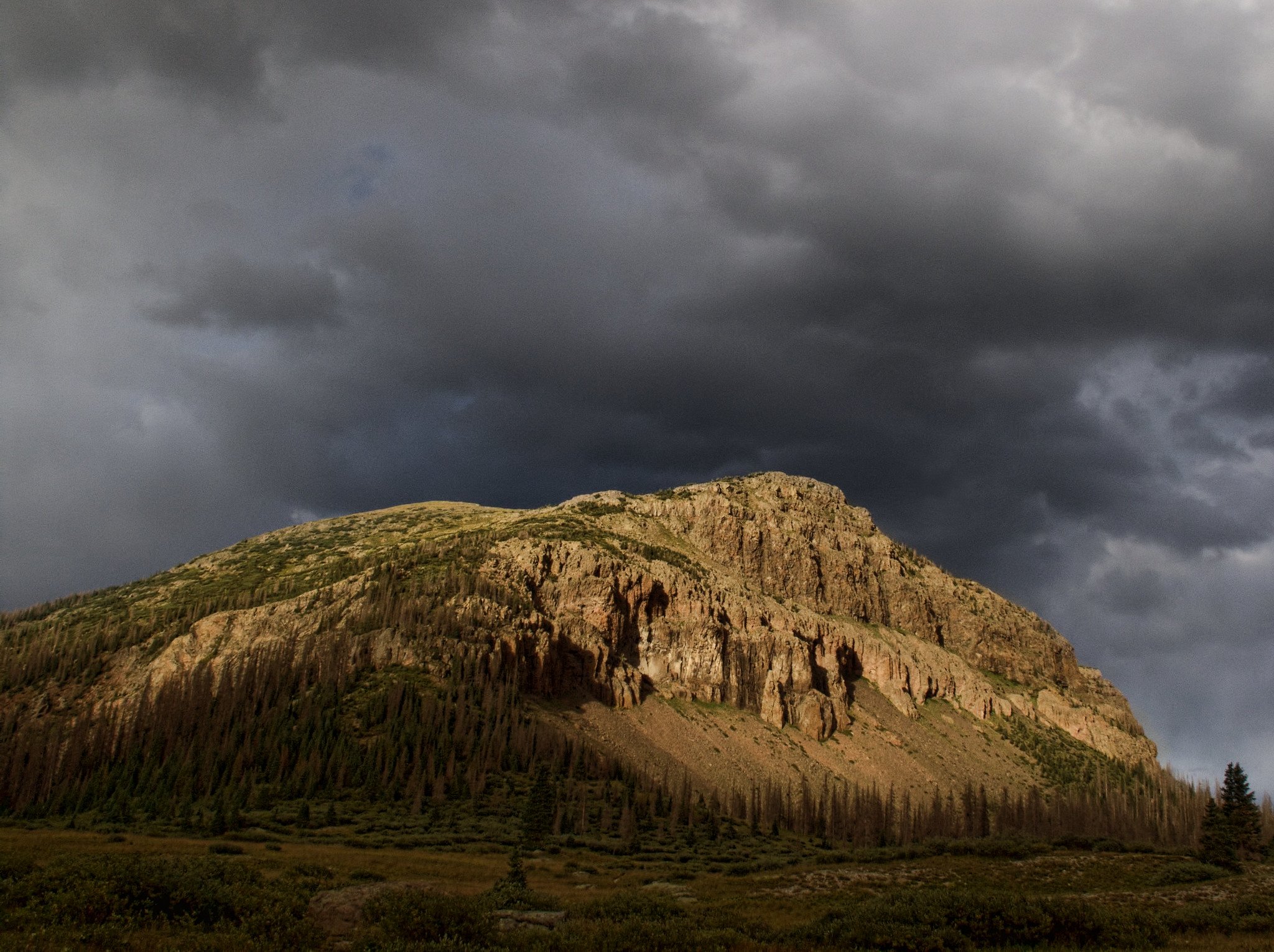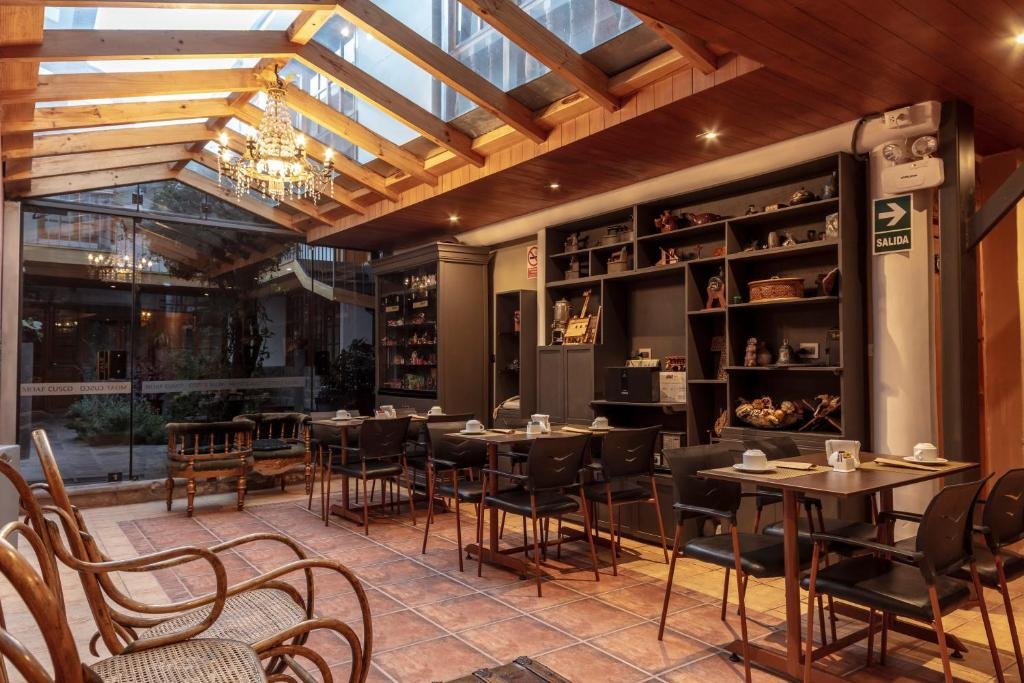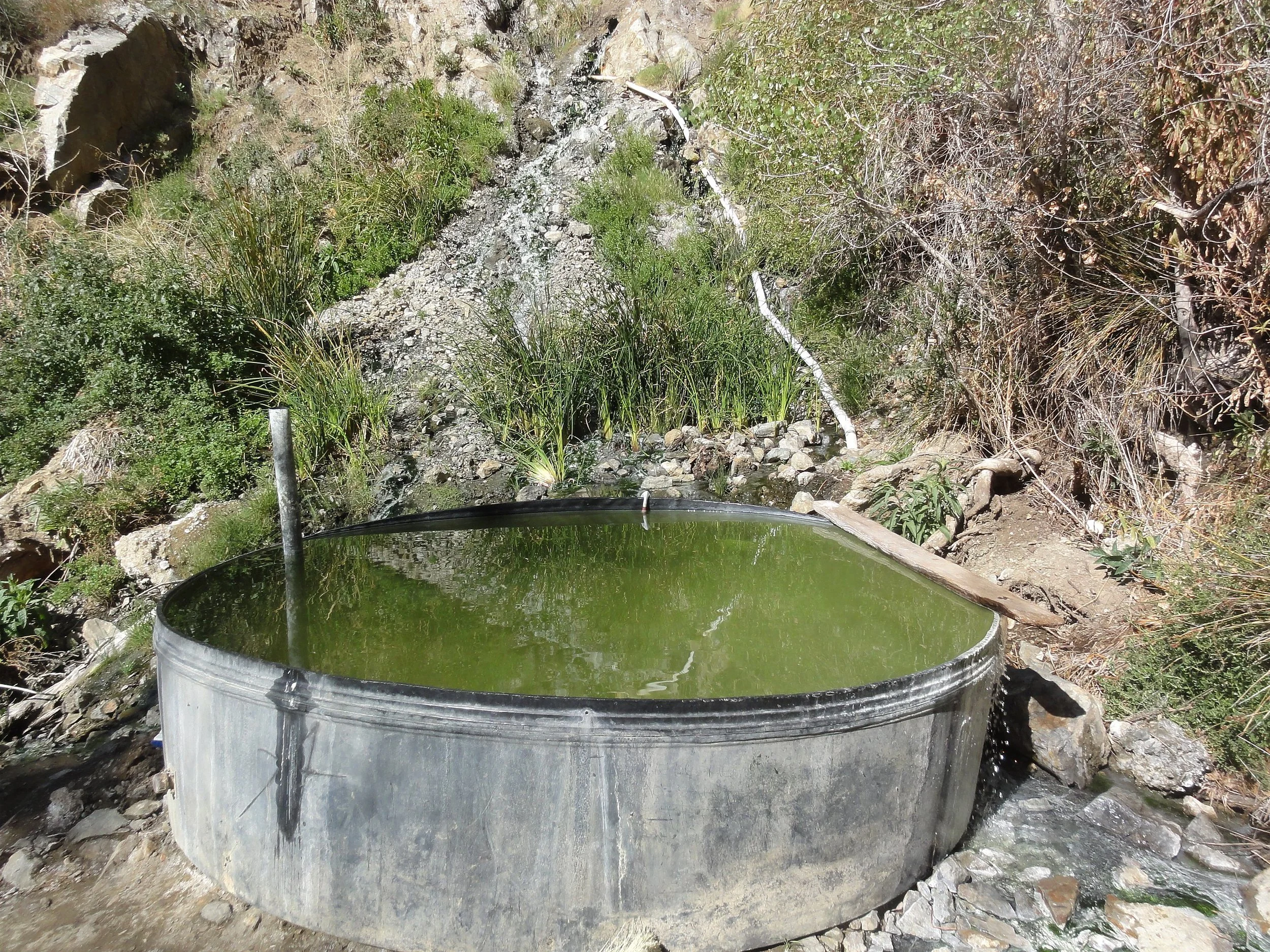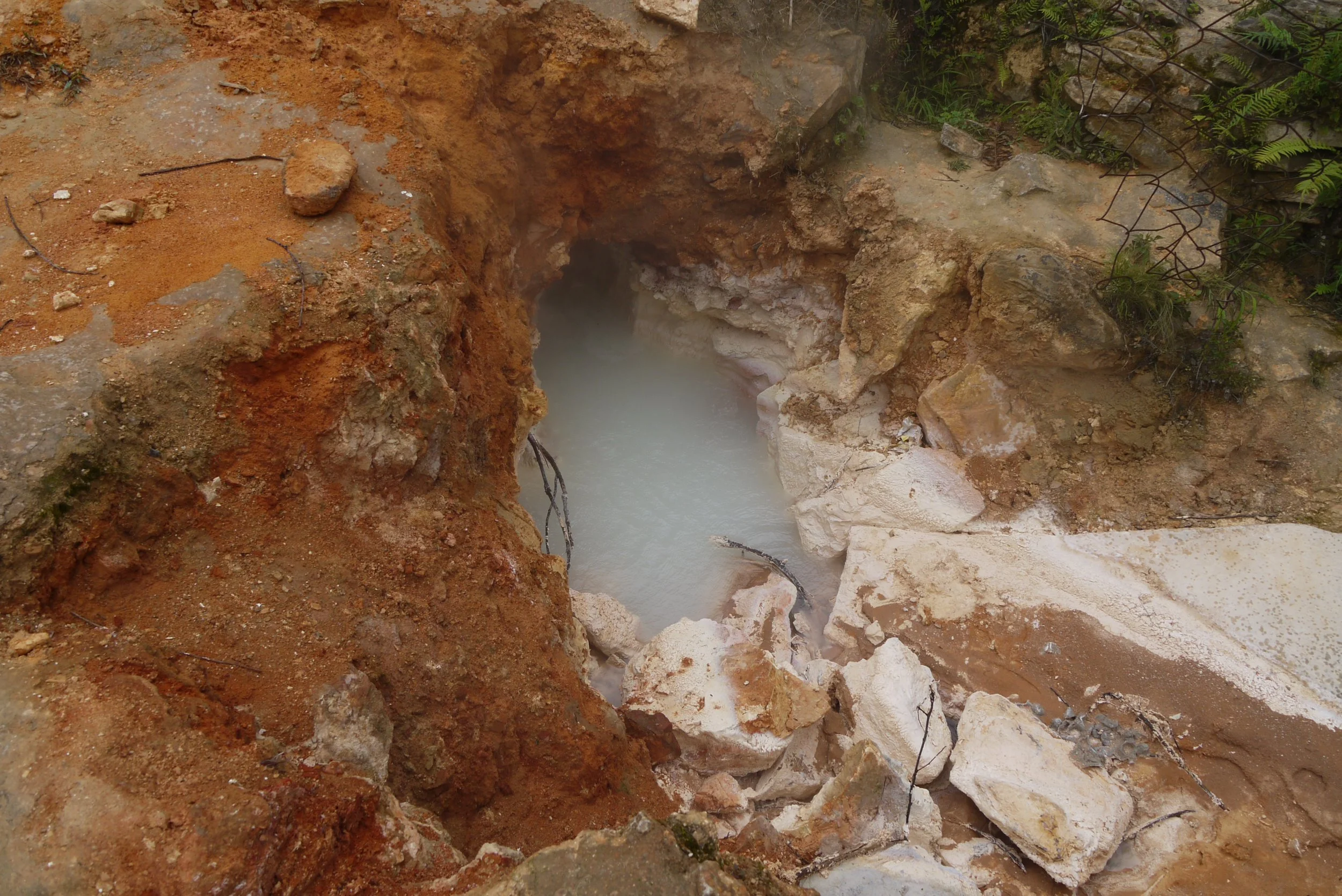More Than 40 Hot Springs for Hikers
Let’s be honest, there’s nothing like a long hike then settling into a lusciously warm hot springs. Even better if no one else is around. With the increasing popularity of spa culture, it’s gotten more difficult to find solstice in hot springs.
I’m using 5 miles as a baseline, but you may need to shoot for 6-8 miles to escape the crowds.
Gearing Up
My backpacking chair – as usual. It was really nice to sit in both the river and the hot springs in my chair instead of on the rocks.
A backpacking towel
Extra swimsuit – It can take a long time for things to dry out. Having a fresh suit to put on in the morning is really nice, especially if you spend a lot of time in the hot springs like we do.
My mosquito net for my head – not the most attractive thing, but bugs are pretty rough. It helped with the wasps too.
Battery powered fairly lights.
Hiking poles – They propel you on the way up and support your knees on the way down.
Trail runners/shoes – I really didn’t want to put my hiking boots on every time I walked the 1/2 mile to the hot springs, but it was muddy and had too many fallen trees to wear sandals.
Pack lots of water and wear sunscreen. Sunstroke and dehydration have led to rescues and even some fatalities on this hike. Do not underestimate it, and be sure you are prepared.
Arizona Hot Springs Trail - USA
There are plenty of accessible hot springs in Arizona, but the hot springs trail is more of a trek. Part of the magic of Arizona Hot Spring at Lake Mead Recreation Area is actually getting there. Visiting the spring—nestled between the narrow rock walls of a slot canyon—requires travel by boat on the Colorado River, or hiking on foot.
With its location near the water, you can access the springs from the river (kayaking/floating) or by hiking 3.1 miles (5.8 miles for the entire loop). The hot springs are inside a narrow slot canyon where someone created multiple pools using sandbags.
Hikers can take one of two trails: White Rock Canyon or Hot Spring Canyon. The latter is shorter, but it's steeper. After your restorative soak, plan to sleep under the stars at the on-site campground.
Arizona Hot Spring trail is strenuous and can be combined to make a loop going down a 20-foot ladder to the White Rock Canyon trail. With a 750-foot elevation change and some steep scrambling, this hike is considered very strenuous.
Stay in the historic Boulder Dam hotel. In the 1930s, the hotel quickly became popular with movie stars who needed to establish Nevada residency so they could obtain a "quickie" divorce.
If you really want to get away from it for awhile, the larger Hot Springs Trail is a 2,421-mile multi-sport adventure route to 100 hot spring areas.
Altyn Arashan Hot Springs - Kyrgyzstan
Altyn Arashan Hot Springs sits at 2,600 meters and offers a very small array of dorm style accommodation, with a BYO kitchen. Most importantly, Altyn Arashan translates to Golden Spa, and it has 10 different hot springs pools for patrons bathing and amusement.
In fact, the small country is so high and has so many tall peaks that it towers as the fourth highest nation in the world, with an average elevation of 9,805 feet (just shy of 3,000 meters).
To get there, most of the trail follows the Altyn Arashan valley gorge, which is beautiful and lush, especially in early April. There was still snow on the ground in parts of the lower levels, only to became regular about an hour from the top. The trek to the Hot Springs is 16km, and while much of it is at only a slight incline, the last hour is a sure climb and you are looking for the end.
Baranof Warm Springs - USA
Nearly all of Alaska is a wilderness. It takes 16 strenuous miles to reach Baranof Warm Springs, but the waterfall-view pools make it a can’t-beat experience. You’ll find these springs in southeast Alaska along the multiday Baranof Cross Island Trail.
Start in Sitka, and be ready for ice fields, soaring peaks, and wildlife, from bears to bald eagles. The route requires an average of three days before you’ll reach the boardwalk to Baranof Warm Springs, where nine pools of up to 124 degrees overlook the glacier-fed Baranof River.
Black Rock Hot Springs - USA
If you are in Nevada, Black Rock hot springs is a must visit. Black Rock Desert hot springs is north of Gerlach, Nevada. This area is the same Black Rock made famous by Burning Man. Accessing the pool is no easy feat, however, and requires the skills of an experienced offroad driver.
The Black Rock Desert’s vast landscape is managed by the Bureau of Land Management (BLM) and comprises 1.2 million acres of national conservation and wilderness area.
A stunning 752,000 acres of the Black Rock – High Rock Emigrant Trails National Conservation Area is comprised of 10 wilderness areas, each brimming with enough only-in-Nevada characteristics to speak to the adventurer in all of us.
Black Rock BLM wilderness areas include the Black Rock Desert, Calico Mountains, East Fork High Rock Canyon, High Rock Canyon, High Rock Lake, Little High Rock Canyon, North Black Rock Range, North Jackson Range, Pahute Peak, and South Jackson Mountains.
You will need to travel across an old, cracked lakebed in the Black Rock Desert–High Rock Canyon Emigrant Trails National Conservation Area. But if you can make it you will find an isolated, beautiful blue pool to relax in.
Do not attempt to travel in this area unless you’ve come equipped with a high clearance, 4-wheel drive vehicle. Do not drive on the playa unless its bone dry.
Chena Hot Springs - USA
One of North America’s most jaw-dropping hot spring destinations is also accessible via hiking: Chena Hot Springs. These restful, steamy waters in Fairbanks are far from primitive—they have their own posh resort with an onsite ice museum. Stay in Fairbanks at the highly rated Pike's Waterfront Lodge where you can enjoy the sauna, your own cabin, and fish in the Chena River.
But you can still work for that soak via the Chena River State Recreation Area’s Angel Rocks to Chena Hot Springs hiking trail. It’s a challenging eight-mile route with 2,000 feet of elevation gain from the Angel Rocks Trailhead to the springs. If you’re coming in the fall through spring, keep your eyes up for a potential mid-soak aurora show.
Chinati Hot Springs - USA
If you are visiting Texas, a hike to Chinati hot springs is a must. Chinati Hot Springs, also known as Ruidosa Hot Springs, offers a rustic escape in the Chihuahuan Desert. The property features several soaking pools, some clothing-optional, nestled amidst dramatic desert scenery. The remoteness contributes to a peaceful atmosphere, and the variety of pools allows for finding a spot with some privacy.
Stay nearby at the Presidio at the Bend with 2 separate bedrooms, a fully equipped kitchen with a dishwasher and an oven, and 1 bathroom.
Callao Hot Springs - Chile
There are plenty of accessible hot springs in Chile. But this hiking and trekking tour of medium difficulty takes you deep into the Andes Cordillera between the lakes Todos Los Santos and Rupanco. You will be able to enjoy spectacular views of the surrounding landscape including rivers, volcanoes, valleys, and forests.
Travel along the shores of Llanquihue Lake towards the Vicente Perez National Park. Eventually, we reach the Todos Los Santos Lake beneath Osorno Volcano. A boat takes you across its tranquil emerald water surface, surrounded by spectacular mountains. After less than an hour, we disembark at the remote trail head in El Callao Valley.
The path leads through the pristine landscape of Chile’s oldest national park, protecting the lush temperate rainforest that is so typical for this region. It takes around four hours to reach the hot springs on the banks of El Callao River. With a temperature between 39° and 42° C (102° – 108° F), they offer maximum relaxation.
Colca Canyon – Peru
There are plenty of accessible hot springs in Peru. For these springs, start in Chivay and take a 3 day hike through Colca Canyon. Flanked by distant, snow-capped Andes, sightings of sacred Condors are common in this dramatically harsh landscape.
The trek consists of a long descent the first day, traversing the length of Colca Canyon the second, and the tricky, steep ascent on the third.
The villages along the way offer accommodation and food, meaning you only need to carry a light day pack for this multi-day trip. So don’t over pack and just enjoy the scale of the canyon, the bird life and a dip in the hot springs in Llahuar.
I personally love the Las Casitas, a luxurious cottage-style villas with private fire place and free WiFi. It offers a spa with massage and aromatherapy sessions and an outdoor pool. There are also stables, children's playgound areas, trout ponds for fishing and regional animals such as alpacas and llamas roam the spacious garden.
The fee for the park is $22 USD. It is valid for a week and there are park officials along the route that will stop you and ask to see your ticket. Food, transport and accommodation should come to around $60 USD for the three days.
Conundrum Hot Springs - USA
There are plenty of hot springs in Colorado that are easy to access, this is not one of them.
Ready to work for your soak? Head to Conundrum Hot Springs near Aspen. That’s why should stay in a bit of luxury before the big trek, and maybe after too!
For a luxury stay, try out the dog friendly Sky Residences at W Aspen with hot tub and pool, coy fireplaces, and views of the mountains.
For more of a budget stay try out St. Moritz Lodge & Condominiums with a year round heated pool, free wifi and ski shuttle, and a kitchenette.
The 17-mile round-trip trail leads through the Maroon Bells-Snowmass Wilderness before reaching a series of high-elevation pools at 11,200 feet.
Conundrum Hot Springs is one of the most popular backpacking trips in Colorado. It is in the Maroon-Bells Wilderness in Aspen, near the Four Pass Loop (another very popular backpacking route).
The hike begins with a mild grade through meadows, along Conundrum Creek, and through stands of aspen trees. There are 4 river crossings total. The 3rd crossing proved to be the trickiest.
Note, Conundrum Hot Springs is clothing optional and there tend to be quite a few people enjoying the springs au naturel.
You’ll gain 2,400 feet on your journey from the trailhead, with multiple creek crossings, including some that are particularly tricky with seasonal runoff. Snow makes the tough hike even trickier.
If you’re lucky, while soaking in the springs, you can see wildlife in the distance, such deer, bears, or even moose.
Permits are required year round from recreation.gov to camp overnight. These permits are hot ticket items so make sure you get online as soon as permits are released to snag them.
Tip: The trailhead parking lot fits only about 25 cars, so in the summer, arrive early to beat any crowds.
Overnight campers are required to reserve and camp in designated sites. Depending on the site the maximum number of people allowed vary from 2-6.
Proper bear containers are required. In addition, packing out your waste (including poop) is highly recommended. They have wag bags at the trailhead, but bring your own just in case they ran out.
During peak season (June 1st- September 1st) there is a maximum stay of 3 nights. If your campsite is uphill from the hot spring (sites 1-11), it should be easy to collect water from Conundrum Creek upstream from the spring.
Deep Creek Hot Springs - USA
When visiting southern California, Deep Creek Hot Springs is a must for adventurers seeking a secluded wilderness soak with a touch of rustic charm. Be prepared for a moderate hike and the wonders of the desert.
The springs are part of the San Bernardino National Forest and the creek is a state-designated Wild Trout Stream if you enjoy fishing. This told me the water is clean.
The remote location and limited capacity guarantee a peaceful and private soak in nature's embrace. When I went I was recovering from my divorce and enjoyed the lithium minerals in the water - known for improving your mood.
Gamma Hot Springs - USA
There are plenty of hot springs in Washington that are easy to access, Jordan Hot Springs is not one of them.
Some hikers say, “Gamma hotsprings are some real deal mountain man shit to get to.”
Discovered by geologist Rowland Tabor during a mapping expedition in 1962, these springs are a popular spot for mountain goats but are rarely visited by humans.
Gamma Hot Springs are undeveloped, remote, and very hot natural springs located in Washington state's North Cascades, accessible only via a long, challenging, 19-mile hike starting near Glacier Peak.
Due to the high water temperature, you must mix it with cold river water for soaking, and the area is only suitable for experienced mountaineers. Reaching the springs involves hiking the Suiattle River Trail and Upper Suiattle River Trail, with the last mile being especially treacherous, and involves crossing significant distances and terrain.
The best route is probably to take the gamma peak trail up till you can access the gamma creek drainage and then head down from there to the hot springs. It is very steep so you may want to bring a rope. If all that sounds like your idea of a good time then the coordinates are 48 9 13.3 N 121 3 47.7 W.
From what I’ve heard, Gamma’s soaking pool is rather small and close to the creek, which allows a nice way to regulate the temperature of the 140F spring. If you go, you will definitely be the only people there and there is a black plastic tube near the spring containing notes from previous visitors and a guest log. Numerous trials have been washed out over the years and the final mile to the spring is classic North Cascades bushwhacking.
The journey begins at Sulphur Creek campground, where you'll follow trail 784 alongside the Suiattle River for approximately 20 km (12 miles). After crossing the river on the Skyline Bridge, you'll continue on the Pacific Crest Trail for about 700 m (0.4 mi) until you reach the junction where the old Gamma Ridge trail (trail 786) heads east. From there, you'll follow this trail, climbing higher on Gamma Ridge until you can find a safe route to descend about 460 m (1500 ft) into the headwaters of Gamma Creek.
Goldmyer Hot Springs - USA
The adventure to reach Goldmyer Hot Springs in Washington is part of the fun. There are a few ways to reach Goldmyer, but the Dutch Miller Gap Trail from the Dingford Creek Trailhead parking lot is the most direct, at about 5 miles each direction.
Enjoy a walk through the Middle Fork Valley and past the rushing Snoqualmie River shaded by soaring, moss-covered trees. The hot spring pools are tucked among 20 acres of forested wilderness preserve, with basic amenities like an open-air cabana and campsites.
Note that reservations are required for Goldmyer Hot Springs and are limited to 20 visitors per day. Reservations are now allotted through an online lottery system.
Water flows steadily from the source of the spring at 125ºF (52ºC), with the ambient temperature of the "cave" hovering around 111ºF (44ºC). This water cascades into nearby pools with progressively cooler temperatures, down to 104ºF (40ºC). A cold water pool is located adjacent to the hot spring pools for cool downs.
Gold Strike Canyon Hot Springs - USA
The Gold Strike Canyon Hot Springs feel a world away from the glitz and glam of the Vegas Strip in Nevada, but in reality, they’re only 45 minutes away.
But don’t lket the proximity trick you. The six-mile trail to the springs involves scrambling across boulders and rappelling down ropes, with the state’s signature red rocks lining the way.
Several hot springs pop up along the route, with a warm waterfall at the route’s end. You can access it from October to early May, with summer closure necessary given the extreme heat.
It has beautiful scenery, some fun scrambling, and you’re rewarded with natural hot springs where you can relax and take a dip. Roughly 40 minutes from the Vegas strip, the trailhead is in between Boulder City and Hoover Dam.
Gold Strike Hot Springs is located near the Hoover Dam. The hike features some class 3 scrambling using ropes to help you up and down large boulders and multiple hot spring pools at the end. You can even hike to the Colorado River.
Since this hike can go slow depending on your comfort level on scrambling. To be safe, most websites recommend 3-4 hours each way, meaning a total of 6-8 hours, not including time to soak.
You can also kayak upriver from Willow Beach, although it is a long paddle. There is no launch permit fee, and you can rent kayaks at Willow Beach. It’s highly recommended to make reservations during holidays and weekends.
There are three main hot springs along the hike. The first is sometimes dried up depending on the time of year. The second spring, where we stopped, is called the Cave of Wonders. If you continue further down the trail, the third and most popular hot spring is just beyond a few small waterfalls.
The river is another quarter mile down from the last hot spring. You can go for a cool dip, but be aware that the water levels and currents can change rapidly.
For wildlife lovers you may see Desert Bighorn Sheep, Rattlesnakes, Lizards, Tarantulas, Scorpions, Leopard Frogs
Gunma Ridge Trail - Japan
Mt. Tanigawa stands regally over the hot spring village of Minakami in northern Gunma in Japan, drawing climbers from far and wide for its rugged peaks and spectacular vistas.
Before and after my hikes, I love finding a luxurious and fun hotels to stay at. In Minakami we found these amazing lodges called Earthboat Minakami Hodaigi where you get your own little cabin and kitchenette with shared sauna, outdoor fireplace, and outdoor seating area.
If you want to keep your hot spring sessions going, try the Onsen Aratashi Minakami where you will get your own private onsen.
A popular long trail among seasoned hikers, its famous for its long stretches without paved roads from the Doai area of Minakami town to Torii Pass in Tsumagoi village, over steep mountains 2,000 m high.
The trail is divided into five areas: Tanigawa, Mikuni/Shima, Nozori Lake, Kusatsu-Shiga Highlands and Manza/Kazawa. The trail cuts through technically challenging terrain, including on Mt. Tanigawa’s ridge, which requires a high level of experience and endurance to scale.
Along some sections, there are no alternate routes, so careful planning and preparation are essential. Near the Kusatsu-Shiga Highlands and Manza-Kazawa areas, you’ll find many hot springs for a long, well-deserved post-hike soak.
Hot Springs Resort and Spa - USA
The Appalachian Trail passes right through downtown Hot Springs, a small outpost 36 miles from Asheville, North Carolina. Reaching the town’s tranquil waters doesn’t require a hike—there’s a parking lot right next to the facility. But do be careful, as the Hot Springs Resort is apparently haunted.
That said, it’s worth heading into the woods first. For a quick trek, take the AT from Hot Springs to Lovers Leap for two miles, then end back at the town’s Hot Springs Resort and Spa, where mineral baths help reduce stress and increase circulation.
Iva Bell Hot Springs, USA
Iva Bell Hot Springs boasts the prettiest view of any I’ve seen in the Sierras in California. This 25-mile out-and-back starting from Reds Meadow takes hikers right past Rainbow Falls, into a verdant, fern-covered canyon, across a series of Yosemite-style granite slabs, past a series of secret waterfalls, and along a burbling, crystal-clear creek before reaching the absolutely lovely hot springs.
Along the way, trekkers will catch some seriously epic views of craggy rock formations and towering granite cliffs off to the west.
Nab an overnight permit for Fish Creek if you’re planning on camping at one of the juniper-lined sites here, then head up the super steep use trail and keep your eyes peeled for several secluded tubs with a view of the entire valley below.
Jordan Hot Springs - USA
There are plenty of hot springs in New Mexico that are easy to access, Jordan Hot Springs is not one of them. Before taking off into the wilderness, stay nearby in Silver City. The Historic Palace Hotel offers free breakfast and neighboring art galleries‚ specialty shops‚ theaters and restaurants.
The Little Bear Canyon Trail to Jordan Hot Springs is not for the faint of heart—you’ll make up to 27 river crossings. It’s roughly 12 miles round-trip through the Gila National Forest, with the trail starting at Gila Cliff Dwellings National Monument Visitor Center.
Those who are up for the journey will reap scenic rewards, from colorful bluffs and rock spires to slot canyons.
This hike in Gila Cliff Dwellings National Monument has it all: views of the historic cliffs and spires, Gila River crossings, and as the cherry on top, a sweet smelling hot spring right along the trail.
The Jordan Hot Springs don’t have salt and sulfur, so they lack that classic “warm fart” smell that lots of hot springs come with.
These 94-degree Fahrenheit pools are still high in minerals, which people as far back as the Native Mogollon people have used for therapy. There are primitive campsites near Jordan Hot Springs, so you can both start and end your day with a nice soak.
According to the national monument, spring break is a very popular time to visit this hot spring. If you’re looking for solitude, visit another time of year or seek out alternatives, such as Melanie Hot Spring.
Kannabe Hiking Trails, Japan
There are plenty of hot springs or onsens in Japan that are easy to access, Kannabe trail gives you some more views and exercise so you can enjoy the springs.
The Kannabe Highlands is a hilly area centered around the picturesque 467-meter-high Mount Kannabe (an inactive volcano). The area is also a part of the San'in Kaigan UNESCO Global Geopark, one of Japan's national geoparks.
Mount Kannabe is one of the Kansai Region’s youngest volcanoes, currently inactive. Stroll up to the top via a gently winding path around the mountain or trek straight up the slanted mountainside for a more advanced hike. The hike is about 4 miles one way.
Kern Hot Springs, USA
For those adventurous souls hiking the High Sierra Trail, the Kern Hot Springs are a sight for sore eyes. Bubbling up near the base of Chagoopa Falls’ delicate cascade, this bathtub-sized concrete pool is at least a 20-mile hike in from any direction. Thruhikers on the HST will hit this glorious place at mile 36, on day 3 or 4 of a week long journey.
With the gigantic rock walls of Kern River Canyon rising all around and the chilly, mellow rapids of Kern River to your right, what’s not to love? Shady campsites with established fire rings, a bear box, and a pit toilet are all a short walk away.
Kumano Kodo - Japan
The Kumano Kodo is a region of Japan comprised of branching pilgrimage routes that stretch into varying corners of the Kii Peninsula. The pilgrimage itself dates back more than 1,000 years and its routes have been walked by all levels of society, from commoners and artisans to aristocrats and retired emperors, and stands as a symbol of inclusivity for all seeking worship.
The trails that comprise the region sprawl over mountain ranges and weave through lush valley greenery, each dotted with quiet hamlets and bustling hot-spring towns famous for their rejuvenating waters.
Walk the Nakahechi as it weaves a path to the three grand shrines: Hongu Grand Shrine, shaded beneath the towering tree canopy of Hongu; Nachi Grand Shrine and its iconic vermillion pagoda set against the backdrop of Nachi Falls; and Hayatama Grand Shrine in Shingū, which sits alongside the gentle waters of the Kumano River.
Take steps towards your dual pilgrim certification. The Kumano Kodo – inclusive of its grand shrines and the pilgrimage routes that join them – was granted UNESCO World Heritage status in July of 2004, joined only by the Camino de Santiago de Compostela in Spain as pilgrimage routes to be awarded this status.
The most popular and accessible route is the Nakahechi, which starts at Takijiri, a trailhead about 15km west of Tanabe, the city on the west coast of Wakayama that serves as the main entry point for the Kumano Kodo. From Takijiri, it’s a three-day walk through the mountains to Hongu (home to Kumano Hongu Taisha).
Before the trek, stay nearby at the Kumano Winery Guest House, a 4 bedroom guesthouse that’s 15 minutes on foot from Kumano Kodo trail. But even more fun, if you ask you can milk their goats and enjoy home made goats cheeses and eggs from their hens.
One of the highlights of Kumano are onsen (hot springs). Just a few kilometers southwest of Hongu is Yunomine Onsen, which is where many people stay on the third night of this trip. In addition to two great public onsen here, most accommodations have their own private onsen.
Lussier Hot Springs - Canada
Hike deep into the Kootenay wilderness to discover this hidden gem at Lussier hot springs. Bathe in emerald pools while cascading waterfalls serenade you, enveloped by the pristine beauty of the surrounding forest.
Fairmont Hot Springs is 40 minutes to the south. Stay nearby at The Raven's Nest Resort & Campground where you can enjoy your own kitchen, outdoor fireplace, play area, seating area, and picnic area. Stay in a wood cabin overlooking the valley.
The temperatures of the pools vary from as hot as 47°C (118°F) down to around 34°C (94°F).
The springs are located between Canal Flats and Whiteswan Lake in the East Kootenays of south eastern BC. The four hot spring pools have been naturally constructed right beside Lussier River using stones and boulders and are easily accessible via Whiteswan Forestry Road.
Marobo Hot Springs, Timor-Leste
The Marobo Hot Springs in Timor-Leste are a series of hot springs located in the Marobo District. The start of a tough but magical 2 & 1/2 day hike includes two natural hot springs, the highest waterfall in the country, remote villages, mountain tops, and spectacular scenery throughout.
Marobo Hot Springs are the best known hot springs in the country. They were developed by the Portuguese, with a resort complex built around the pools, but fell into disrepair. In 2016 the whole complex was redeveloped, but little maintenance appears to have taken place since. As of 2024 the toilets are completely out of action, and derelict buildings surround the pools.
The springs are located in a remote area and can only be accessed by foot or by four-wheel drive. The hot springs produce nearly 530 gallons of water per minute, and have the characteristic pungent stink of sulphur. They also contain a large quantity of sodium and calcium.
The hot springs produce ~2,000 litres of water per minute. There are three pools, one very hot (up to ~50C), one hot, and one colder. It was refreshing to a degree taking a soak, but hot springs in a cold climate are more enjoyable than in a hot climate.
Middle Fork Salmon River, Idaho
Looking for a long hike that promises relaxation in Idaho hot springs? This almost 100-mile trail in the heart of the Frank Church—River of No Return Wilderness is a geothermal paradise.
Follow miles and miles of canyon views to several springs either right along the Middle Fork Salmon River or a short side-jaunt away.
You could relax your muscles in the hot springs almost every day on trail if you wanted to. There’s even a warm waterfall at Sunflower Hot Springs that acts as a steamy shower. In the summer, you might share these hot springs with some river rafters, so it’s best to time your hike around early fall. (Also, watch out for ticks and horse flies along the trail.)
Mist Mountain Hot Springs - Canada
If you are visiting Alberta, Canada don’t miss Mist Mountain hot springs. Mist Mountain Hot Springs, tucked away in Kananaskis Provincial Park, consists of two tiny, undeveloped hot pools that offer breathtaking mountain views. These are the only undeveloped hot springs in Southern Alberta suitable for bathing.
There is no lodging directly at the springs, with camping in Kananaskis Provincial Park being the closest option and nearby homestays.
The primary activity associated with Mist Mountain Hot Springs is the challenging 8km (round trip) hike, involving a 490m elevation gain and taking approximately 2.5-3.5 hours. The journey itself is an integral part of the experience, with the hot springs serving as the ultimate reward.
Mist Mountain is described as "one of the best hikes in Kananaskis" and an "incredible adventure" , with the hot springs serving as the "reward" for the strenuous effort. The hike is challenging, with warnings about bears, scree sections, and the absence of cell service.
Mount Asahidake Loop - Japan
The highest peak of the Daisetsuzan Volcanic Group in Japan is known to be ''the roof of Hokkaido''. You can take Daisetsuzan Asahidake Ropeway to the Sugatami Station and start climbing from there. The route offers majestic landscapes and the experience of hiking on a variety of volcanic terrain, including snow.
There are plenty of amazing hotels to stay at next to the Ropeway. I like the Onsen Hostel K's House Hokkaido Asahidake where you can stay in these cute little teardrop pods and soak in onsite onsens.
The hike is about 8 miles. The first third was the ascent to the summit, which took about 90 minutes. The next third was another 90-ish minutes, which was the fairly tricky descent and then it's mostly rolling hills until you get to the onsen. Weather changes quickly, you definitely need layers.
Mt. Fuji - Japan
The highest mountain in Japan, and a symbol of the nation, some might say a trip to Japan isn’t complete without a visit to Mt. Fuji. But as famous Japanese paintings and prints from the past few centuries can attest, there’s more to do at this famous mountain than just reaching the top.
Whether you love to hike, or just want to see all the gorgeous scenery from the foot of the mountain, there’s plenty to do on and around Mt. Fuji!
Fuji-Hakone-Izu National Park, where you can enjoy the majestic Mt. Fuji from various locations, is one of the most visited national parks in Japan. Many climbers from both Japan and abroad attempt to climb Mt. Fuji, which is covered in snow all year round except in summer. Fuji-Hakone-Izu National Park covers the famous hot spring areas of the Izu Peninsula and Hakone, to the Fuji Five Lakes. If your dream is to soak while gazing at Mount Fuji, this is your chance.
Mt. Mitsumine - Japan
At 935 meters, Mitsumine may not boast towering heights, but its rugged terrain more than makes up for it. The trail begins at a deer gate, and shortly after, a sign informs hikers that the summit is 5 km ahead.
The path quickly begins to ascend, offering occasional glimpses of the metropolis and Yokohama, and, on clear days, sweeping views of Sagami Bay and the Boso Peninsula
The ridgeline itself is rugged and jagged, with narrow sections requiring some scrambling. Thankfully, strategically placed chains and ladders offer a welcome aid, and it takes just under 3.5 hours to reach the summit. Despite being under 1,000 meters, the hike is far from easy, with steep, eroded trails and exposed ridges making for a challenging ascent.
Nanasawa-so is located just an hour from central Tokyo in Atsugi City, this hot spring inn boasts an exceptional natural hot spring, renowned for its skin-beautifying properties. The name “Nanasawa” comes from its rich water sources, complemented by seven streams that meander through the area. Nanasawa Onsen was discovered in the Hoei era when a wounded snake was healing itself.
Stay nearby at the Motoyu Tamagawakan hot spring hotel where you can enjoy hand made soap using hot spring waters.
The spring’s clear, colorless water provides a soothing, lotion-like sensation, earning it the nickname “lotion bath” for its rejuvenating effects and ability to keep the body warm after bathing. An outdoor sauna further enhances the experience. The inn also serves exquisite seasonal dishes, including wild boar hot pot, made with fresh, locally sourced ingredients, praised for their exceptional flavor and presentation.
Olympic Hot Springs - USA
If you are hiking through Washington, Oympic hot springs is a beautiful stop. Olympic Hot Springs are natural, unmaintained hot water seeps in the Elwha River Valley. These springs are only accessible by foot and no pets or bicycles are permitted.
Note: The pools are in a wilderness area and are not tested or treated by the park. They may contain harmful bacteria and use of these pools is at your own risk.
The closest place to stay before your hike is the Terra Vista Chalet with your own fireplace, balcony, and mountain views.
There are at least 20 pools - some pools are right along the trail, others are a bit more secluded. When you find one you like, be sure to test the temperature; some can be as high as 118 degrees. Getting there is a choose your own adventure - the shortest route is a 2.5-mile hike with the longest being over 20 miles.
Paulina Lake Hot Springs - USA
Just 25 miles south of Bend, Oregon is Paulina Lake Hot Springs, a series of primitive man-made pools. The closest place to stay is Best Western Newberry Station with a hot tub and pool, free wifi and room soundproofing.
Water temperatures in this Deschutes National Forest hideaway hang around 95 degrees. The lake itself is located within the Newberry Volcano caldera. It’s fed by rain, snowmelt, and hot springs.
Access these pools via a marked spur from the 7.5-mile Paulina Lakeshore Loop Trail, which starts at the Paulina Lake Campground.
Prophet River Hot Springs - USA
If you are in western Canada, try out Prophet River hot springs. Embark on a backcountry adventure and discover this remote oasis.
Prophet River Hot Springs Park is located in the upper reaches of the Prophet River some 60 km west of the Alaska Highway and about 250 km northwest of Fort St. John. Note that the hot spring is shallow and only about a foot deep, in bedrock.
Tip: Pack sturdy boots and be prepared for a moderate hike.
This wilderness park, accessible by hiking, horse or helicopter, is surrounded by the Eastern Muskwa Ranges and protects locally significant hot springs.
The ideal time to visit Prophet River Hotsprings Provincial Park is during the warmer months, from late May to early September, when the weather is most conducive for soaking in the hot springs. Winter can be harsh, with heavy snowfall limiting access to the park's natural wonders.
ORVs including ATVs, off-road motorcycles, snowmobiles and side-by-sides are not allowed.
Stones sheep, elk, moose, deer, black bear and grizzly bear frequent the area.
Pyrénées-Orientales - France
Want to explore ocean views and stunning mountains in the south of France all in one trip? If you have time, head to Pyrénées-Orientales and start along the coast.
Here, you’ll be graced with seaside resorts, stunning sandy beaches and rocky coves with breathtaking views. Renowned beaches include Canet-en-Roussillon, Saint-Cyprien, Argeles-sur-Mer and the beaches of Torreilles, which offer dunes, reeds and ponds. There’s also a traditional Catalan village at Sainte-Marie-la-Mer.
The three hot baths is a half an hour’s walk along the Las Ayguès Calentes path to the three pools from Thuès-entre-Valls. Keep going on the path and find amaing hot water in the waterfalls, up to 44-46°C.
Source du Figuier (The Fig tree spring) is located just after the tunnel, on the side of the RN116, almost opposite the D28 road to Canaveilles. If you head upriver for about 500 metres, you’ll come to a former spa establishment and hotel, the ‘Relais de l’Infante‘, now in ruins.
Bains de Dorres are set in a vast lawned area with stunning views of the mountains. Stone pools, inspired by Roman baths, provide hot water and can accommodate several bathers at once. The daily rate is €6 per adult. There’s also a refreshment bar at reception serving drinks and ice creams at reasonable prices.
First, the French don’t like their hot springs too hot. Typically, the water is just a touch below body temperature. Not terrible, but always unsatisfying. At our favorite hot springs in California, there is a “hot pool” with water at 46 degrees celsius, and a warm pool around 38 degrees. Often, we find the water at French thermal stations to be around 34 degrees or 35 degrees.
Pyrenées-Orientales is the French department located along the eastern part of the mountain range as it rises out of the Mediterranean and then soars 2,784 meters at the peak of Canigou Mountain.
Rainbow Hot Springs - USA
The Colorado town of Pagosa Springs is famous for its aquifer—one of the world’s deepest at more than 1,000 feet—but just north of this is a more rustic yet equally pristine option: Rainbow Hot Springs. There are plenty of hot springs in Colorado that are easy to access, this is not one of them.
You can setup at one of many hotels in Pagosa Springs. I love the Pagosa River Domes with your own hammock and stove, while enjoying the stars through the skylights or on a nightwalk meander through the property.
For a little more fanciness and comfort stay at The Springs Resort & Spa with a whopping 15 pools, and onsite massages, body treatments, and facials.
It’s a nine-mile round-trip hike from the West Fork Trailhead to reach the pools, but this trek through the Weminuche Wilderness Area is as stunning as the pools it leads to. The surroundings alternate from trickling streams to pine-dotted hills, with two steaming mineral-rich pools ranging from 95 to 105 degrees as the grand finale.
Salkantay – Peru
There are numerous hot springs in Peru that will help you relax, but the ones in Salkantay will give you a lovely view.
With hiking the famous Inca Trail incredibly expensive and constantly booked up, Salkantay is the best affordable alternative hike to Machu Picchu.
Cocalmayo Hot Springs are near the town of Santa Teresa, a common stopping point on the Salkantay Trek.You will find 3 pools of different sizes and depths. The water temperature varies between 38 and 44 ºC and unlike most thermal waters in Peru, it has clear waters.
This incredibly scenic 6 mile trek that starts in Cusco will take you 4,800 meters past snow-capped peaks, turquoise glacier lakes, natural hot springs and through dense Peruvian jungle. Before your trek stay at the highly rated MOAF Cusco Boutique Hotel with a yummy breakfast and quiet night time experience.
You’ll pass beneath the towering, sacred peak of the Salkantay mountain, which is encrusted with glaciers and snow all year around. I probably don’t have to tell you that Cusco is near the well photographed Rainbow Mountain.
San Kamphaeng - Thailand
Thailand has 112 hot springs in the northern, western, central and southern locations with hot water temperatures at the surface from 40 to 100 degrees celsius.
The San Kamphaeng Hot Springs Ridge trail is a moderately challenging 6.7-mile trail near Mae On, Chiang Mai, leading to the famous San Kamphaeng Hot Springs. Either before or after your hike you can keep relaxing by staying at the Sippa Hotspring Resort with its own hot springs and free bike rentals to explore the area.
San Kamphaeng Hot Springs has 2 hot springs shooting burst of hot water around 20 metres high into the air. Water temperature is originally over 100 degrees Celcius and then loses its heat through the blowing wind. The place offers facilities for foot soaking, traditional mineral bath and a mineral swimming pool.
One of the things you need to do at the springs is boil some eggs. You can buy a basket of 3-4 eggs for 20 Baht at the gate, or in one of the little stands inside the hot springs area.
Santa Rita Hot Springs - Mexico
There are many beautiful hot springs in Mexico, Santa Rita is the closest if you are in the U.S. Santa Rita Hot Springs, a set of magical thermal pools outside the small town of Santiago in Baja California Sur. Just an hour outside of Los Cabos you’ll find these turquoise-blue natural hot springs—and yes, the water is actually hot!
You’ll need to pay about $150 pesos ($8.50 USD) per person as an entry fee at Rancho Santa Rita. You can stay right next to the springs area at Amet, where you can stay in your own cabin or socialize in a yoga class, at the fire pit, or onsite pool.
Make it stand out
Whatever it is, the way you tell your story online can make all the difference.
You can easily spend a whole day jumping between the thermal springs and cool pools at Rancho Santa Rita. However, if you’re looking for something else to do in the area, I recommend stopping at Fox Canyon (Canon de la Zorra in Spanish) which is about twenty minutes away. It’s home to one of the most stunning waterfalls in Baja, Sol De Mayo Waterfall, and several refreshing natural pools for swimming.
Sespe Hot Springs - USA
Sespe Hot Springs is located deep in the Sespe Wilderness near Santa Barbara, California. There are three possible access points for reaching the springs, but all require either a ridiculously difficult day hike or a strenuous multi-day trip. The Ojai Ranger District has a useful PDF describing the various trails.
Sespe Creek has some great swimming holes, but a 16 mile trek to the hot springs might be a bit much when it’s 100 degrees outside.
From Ojai, CA, follow Hwy 33 north for approximately 15 miles. Make a right at the signed junction for Rose Valley (and Piedra Blanca). From here, it’s another 5 miles to the trailhead. Follow signs for either Piedra Blanca or Sespe River Trail.
Make it stand out
Whatever it is, the way you tell your story online can make all the difference.
After your hike, take some time for luxury by staying at the Ojai Valley Inn with a full health spa, championship golf course, tennis coaching, and locally grown food.
Stanley Hot Springs - USA
It’s not hard to find beauty in Idaho’s rivers and mountains, with a number of hot springs you can explore. Stanley Hot Springs in North Central Idaho is said to be the most difficult hot springs to access in the entire state.
The trail begins at Wilderness Gateway Campground along the Lochsa River off Highway 12. The trail up to Stanley Hot Springs is steep – 4.75 miles and about 1,700 ft of elevation gain.
I would say about 60% of the trail is shaded, at least during early August. Any time you come out of the trees and look out over Boulder Creek, the views are amazing. You’ll know you’re halfway there when you come to the Selway-Bitterroot Wilderness sign.
There are no good water sources along the way, so make sure to stock up before you leave. Seriously, bring as much water as you can carry.
The hot spring itself is one of the best I’ve been to. It’s three pools – the top one being almost too hot to sit in for longer than a minute or two and then gradually getting cooler as you go down. The bottom pool was still quite warm. The top pool is pretty large and almost neck height in some areas when you’re sitting down. The middle and bottom pools are more shallow.
Sykes Hot Springs - USA
There are plenty of hot springs in California that are easy to access, this is not one of them. The trail to Sykes Hot Springs is no joke.
It’s a 20-mile out-and-back path along the Pine Ridge Trail, one of the Big Sur’s most beloved treks. Be ready for stream crossings (which can be impassable during winter’s heavy snows), downed trees, and an elevation gain of 1,000-plus feet.
Add an overnight trip to your journey via Sykes Camp so you can wake up and enjoy this geothermal wonder sans crowds. Yet somehow this site has become filled with trash so make sure to pack out all trash and waste!
Termas de Chillan - Chile
Visit snow covered mountains on the way to Termas de Chillan hot springs. The first attraction on the trail was the Fumaroles. In just half an hour, you find yourself amidst dense streams of steam that the earth breathes. Small hot pools and streams bubble here, and you can cover yourself with pungent but undoubtedly therapeutic mud.
Further on, the trail was already snow-covered. I climbed to the pass — beyond it, the next valley unfolded, with a hot river flowing down from the volcano slopes. The path was clear and easily navigable — with both snowshoes and regular boots. But on the other side of the mountain, there was more snow. So, I walked a bit to assess the descent. However, I reached a fairly steep couloir simultaneously with worsening weather and incoming clouds, which were not predicted in the forecast.
Tapovan Hot Springs - Nepal
You can’t take a trip to Nepal without visiting Tapovan hot springs. Embrace the off-the-beaten-path adventure to Tapovan hot springs, reachable by a moderate hike through the jungle. Experience the remote setting and immerse yourself in the natural beauty.
Close to Tapovan hot spring is also the starting point for the Bhavishya Badri Trek. It is beyond Tapovan, up the Dhauliganga river and involves a track of about 3 km from the road. It has an altitude of 2744 m and is located within dense forest.
Combine your visit with exploring the nearby Shuklaphanta National Park for wildlife encounters. The name Shuklaphanta is taken from the largest grassland of Nepal Shuklaphanta which is a home to the largest herds of Swamp Deer in the world.
Embark on a challenging trek through remote villages to reach this hidden gem nestled amidst the Himalayas. The reward is a solitary soak in a natural rock pool with stunning views.
Utsukushigahara Kogen Long Trail - Japan
This 45 km trail, which takes its name from the Utsukushigahara highlands (Matsumoto city, Nagano prefecture), features moss-covered forests and ridgelines with panoramic views of Japan’s Alps. Despite its short distance, the mountains of the Yatsugatake Chushin Kogen Quasi-National Park offer challenging ups and downs that make it a rewarding hike.
By combining the trail with the Shinonome no Michi route –– which runs between Shiojiri city and Matsumoto city’s east side and connects the trail’s start and end points at the base of the mountains –– you can complete a loop.
Starting in the foothills, you’ll soon enter the ridgeline of Utsukushigahara, where you’ll be treated to views of the Northern and Southern Alps, Mt. Fuji and the Yatsugatake Mountains. While access isn’t easy, there are several hot spring towns in the foothills, and Matsumoto is nearby. There are no campsites or lodges along the route, though those sites are expected to be developed at some point.
Near the highlands is 38-km Kirigamine-Utsukushigahara Central Watershed Trail, which runs along the ridge between the Utsukushigahara lava plateaus and Mt. Kirigamine –– the watershed divide between the Sea of Japan and the Pacific Ocean. Beyond Mt. Kirigamine, the Yatsugatake mountain range continues, offering the option of a multi-trail journey.
Yangmingshan National Park is a wide mountainous and volcanic area located north of Taipei City, very easy to access from downtown. The area is famous for its hiking trails, vegetation and wildlife, volcanic features and hot springs.


